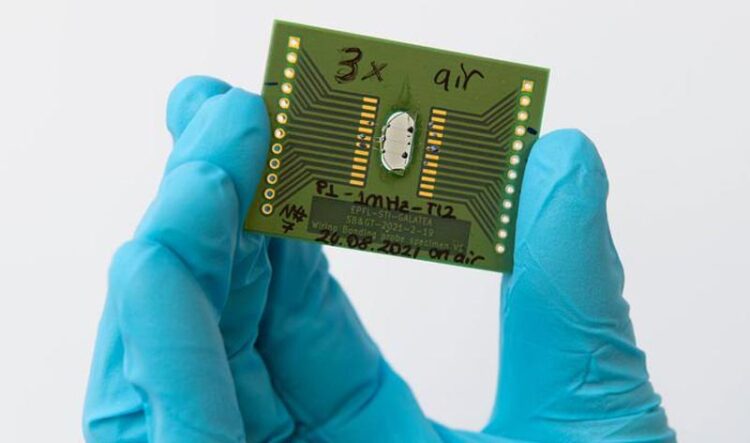Turning glass into a ‘transparent’ light-energy harvester

Turning tellurite glass into a ‘transparent' light-energy harvester by etching semiconducting patterns using femtosecond laser light.
Credit: EPFL / Lisa Ackermann
What happens when you expose tellurite glass to femtosecond laser light? That’s the question that Gözden Torun at the Galatea Lab, in a collaboration with Tokyo Tech scientists, aimed to answer in her thesis work when she made the discovery that may one day turn windows into single material light-harvesting and sensing devices. The results are published in PR Applied.
Interested in how the atoms in the tellurite glass would reorganize when exposed to fast pulses of high energy femtosecond laser light, the scientists stumbled upon the formation of nanoscale tellurium and tellurium oxide crystals, both semiconducting materials etched into the glass, precisely where the glass had been exposed. That was the eureka moment for the scientists, since a semiconducting material exposed to daylight may lead to the generation of electricity.
“Tellurium being semiconducting, based on this finding we wondered if it would be possible to write durable patterns on the tellurite glass surface that could reliably induce electricity when exposed to light, and the answer is yes,” explains Yves Bellouard who runs EPFL’s Galatea Laboratory. “An interesting twist to the technique is that no additional materials are needed in the process. All you need is tellurite glass and a femtosecond laser to make an active photoconductive material.”
Using tellurite glass produced by colleagues at Tokyo Tech, the EPFL team brought their expertise in femtosecond laser technology to modify the glass and analyze the effect of the laser. After exposing a simple line pattern on the surface of a tellurite glass 1 cm in diameter, Torun found that it could generate a current when exposing it to UV light and the visible spectrum, and this, reliably for months.
“It’s fantastic, we’re locally turning glass into a semiconductor using light,” says Yves Bellouard. “We’re essentially transforming materials into something else, perhaps approaching the dream of the alchemist!”.
Journal: Physical Review Applied
DOI: 10.1103/PhysRevApplied.21.014008
Article Publication Date: 5-Jan-2024
Media Contact
Hillary Sanctuary
Ecole Polytechnique Fédérale de Lausanne
presse@epfl.ch
Office: +41-21-693-2222
Media Contact
All latest news from the category: Materials Sciences
Materials management deals with the research, development, manufacturing and processing of raw and industrial materials. Key aspects here are biological and medical issues, which play an increasingly important role in this field.
innovations-report offers in-depth articles related to the development and application of materials and the structure and properties of new materials.
Newest articles

Trotting robots reveal emergence of animal gait transitions
A four-legged robot trained with machine learning by EPFL researchers has learned to avoid falls by spontaneously switching between walking, trotting, and pronking – a milestone for roboticists as well…

Innovation promises to prevent power pole-top fires
Engineers in Australia have found a new way to make power-pole insulators resistant to fire and electrical sparking, promising to prevent dangerous pole-top fires and reduce blackouts. Pole-top fires pose…

Possible alternative to antibiotics produced by bacteria
Antibacterial substance from staphylococci discovered with new mechanism of action against natural competitors. Many bacteria produce substances to gain an advantage over competitors in their highly competitive natural environment. Researchers…





















